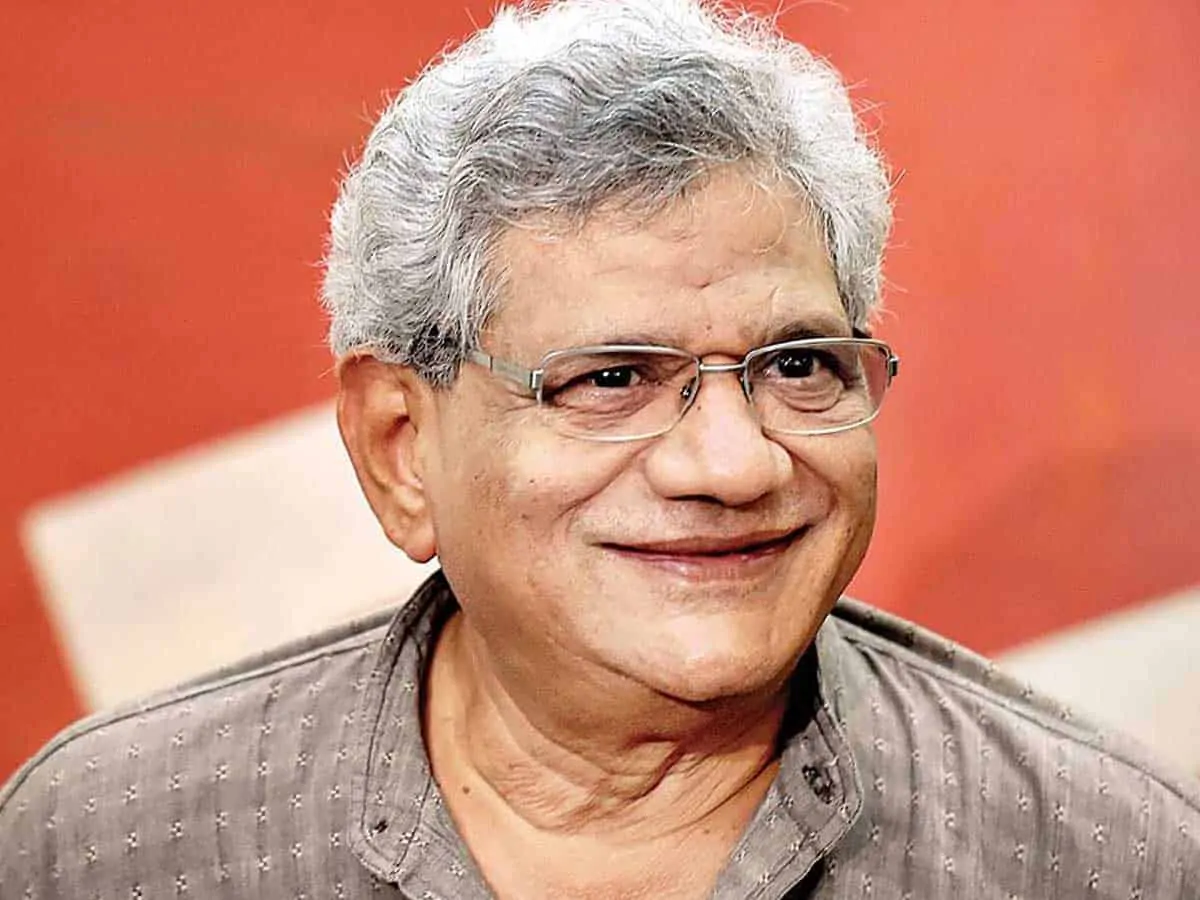
Sitaram Yechury
Comrade Sitaram Yechuri will always be remembered as the most pragmatic communist like Jyoti Basu and Harkishan Singh Surjeet. His beliefs sat comfortably with affability and political practicality. His ideological commitment was unmatched and his ability to connect across the political spectrum was brilliant. Sitaram, the Communist Party of India (Marxist) General Secretary when he passed away, rose through the ranks, starting as a Student Federation of India activist at the Jawaharlal Nehru University.
Serving as the party’s General Secretary since 2015, Sitaram always stood out among his comrades, because of his affable nature. It did not matter to him whether the person was his ideological friend or foe. He would debate or discuss with an open mind. He was always accessible to everyone. His friendly nature made him the “darling of the media “ giving bites to television channels and comments to newspapers. In Parliament as well as outside, among political, media and friendly circles, he was simply known as “Sita”. That was his popularity.
Also read: Obituary: Sitaram Yechury was more than just a political leader
As a young leader working at the party headquarters from 1980, Sitaram worked closely with many communist stalwarts and learnt from all of them. He imbibed a rare combination of erudition, inspired by the likes of B T Ranadive, P Sundarayya and EMS Namboodiripad. Both as an ideologue and a practitioner of Parliamentary politics, Sitaram attempted to seek answers outside orthodoxy and dogmatism.
In 1984, Sitaram had a major break in the party when he became a member of the Central Committee of the CPI (M). When Harkishan Singh Surjeet became the party general secretary in 1992, Sitaram was promoted to its polit bureau, the highest policy-making body. It is said that Sitaram was primarily groomed and nurtured by Surjeet into practical politics. After the collapse of the Soviet Union in 1992, the then-party chief, Surjeet, in a subtle way, brought many changes in the party’s functioning and ideological thinking. Earlier the Indian communists were rigid and dogmatic in addressing the public issues.
Within the party, Surjeet’s hands were strengthened and encouraged by another communist veteran Jyoti Basu. In the process, Sitaram, as an understudy of Surjeet, consolidated his position despite many seniors and veterans in the party. For about nearly 14 years from 1992 to 2005 as the party’s general secretary, Surjeet confronted communal politics head-on and also the right-wing authoritarian forces in the country. Sitaram, as part of Surjeet’s team, became a key architect of many coalition governments at the Centre. While tackling the hard-liners within the party, Sitaram built bridges with the Congress Party to keep the Bharatiya Janata Party at bay. Here we can mention the two United Front governments in the late 90s and later the United Progressive Alliance-1 government in 2004.
After Surjeet’s exit in 2005, a typical party hardliner and orthodox communist, Prakash Karat, took over the party’s reins. Karat tried to keep the Congress Party and other secular forces at a distance while dealing with communal forces led by the BJP. So in a way, Sitaram was sidelined to some extent or his influence in the party was reduced. When Karat was at the helm of party affairs, Sitaram moved to Parliament as a Rajya Sabha member (from 2005 to 2017) and proved to be a brilliant parliamentarian. It may be recalled that Karat opposed the US nuclear deal on the floor of the Parliament and later withdrew the Left support. Later, Sitaram admitted that his party had not been able to explain its stand on the nuclear deal to voters.
Sitaram bounced back in 2015 when he became the party general secretary succeeding Prakash Karat. He displayed real pragmatism in fighting the Narendra Modi regime. To take on the BJP, he befriended the Congress Party and other “secular” forces. After he became party chief, he revived his relationship with Sonia Gandhi, Rahul Gandhi and others. The party hardliners said that the Congress Party has been a class enemy for years, hence there should be no tie-up, but Sitaram silenced them. His thesis was that the Congress Party was a secular force and the Left should go with it. Today the CPI-M is part of the INDIA Bloc. Political circles even feel that Sitaram is the political mentor of Rahul Gandhi.
One of Sitaram’s major contributions to public life is getting political parties in the country to internalise the Trotskyite idea of marching separately but striking together. The Kerala model is the prime example where the Congress Party and the CPI (M) are arch-rivals in the state but work together at the Centre against the BJP. West Bengal and Punjab have also adopted it with the INDIA bloc experiment.
Sitaram had friends across the political spectrum and he was admired for the strength of his convictions and his most engaging personality. He was also a linguist. Besides Hindi and English, he could speak Telugu, Tamil and Bengali. This helped him in reaching out to wider canvass of people.
His death yesterday has left a huge vacuum in the Left movement and the fight against the communal forces. The Left as a force is also diminishing. So also the electoral footprint shrank, with the CPI (M) getting only 4 seats in the 18th Lok Sabha.
With Left losing its importance, in the present context, it will be an uphill task for its revival in India, which was Sitaram’s dream.
*Senior journalist
Image courtesy – Sitaram Yechury’s Facebook page





